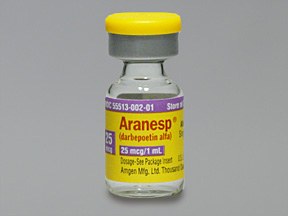 Aranesp (darbepoetin alfa) is a prescription medication for the treatment of anemia associated with chronic kidney disease, kidney failure, or cancer patients undergoing chemotherapy.
Aranesp (darbepoetin alfa) is a prescription medication for the treatment of anemia associated with chronic kidney disease, kidney failure, or cancer patients undergoing chemotherapy.
Over 6 million people have been treated with Aranesp worldwide. There are 11 reports of patients who developed Stevens-Johnson Syndrome (SJS) and 4 reports of Toxic Epidermal Necrolysis (TEN) as of April 2017, health officials said.
Health Canada is working with Amgen, the manufacturer of Aranesp, to update labels with this safety information. According to the agency:
Patients should discuss any skin reaction with their doctor, and seek immediate medical attention if they experience any of the SJS/TEN symptoms.”
Healthcare professionals should discontinue Aranesp therapy immediately if a severe skin reaction occurs, or if SJS/TEN are suspected, and permanently discontinue it if SJS/TEN is confirmed.
SJS/TEN are serious, life-threatening skin conditions in which the top layer of skin (epidermis) detaches from the lower layers (dermis). The skin and peels off in large sheets, appearing like a severe burn.
It begins with flu-like symptoms, fever, tiredness, muscle and joint pain, followed by a widespread rash with reddening and blistering all over the body, and sometimes around the mouth, eyes, nose, throat, or genital area.
TEN and SJS are the same disease, but TEN is more severe. The rash covers at least 30% of the skin and causes death in up to 50% of patients. In comparison, SJS is deadly in up to 10% of people.
Source: ARANESP – Risk of Severe Skin Reactions: Stevens-Johnson Syndrome and Toxic Epidermal Necrolysis
